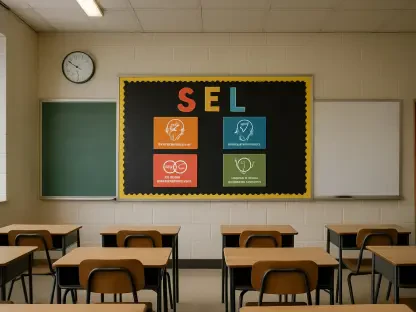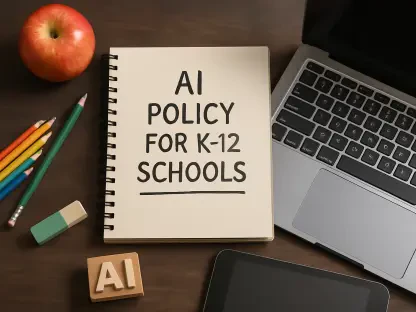The recent implementation of immigration enforcement policies within Alachua County Public Schools has ignited a heated debate, as these guidelines necessitate cooperation with U.S. Immigration and Customs Enforcement (ICE). This directive has incited widespread concern among teachers, parents, and community members who argue that the regulations put students, particularly those from immigrant backgrounds, in jeopardy. They fear these new mandates may undermine the safety and supportive atmosphere traditionally associated with educational institutions. This article seeks to examine the guidelines, community responses, and broader implications of these policies.
New Guidelines and Legal Context
Issued in February, the new guidelines reflect state laws recently enacted by Governor Ron DeSantis, requiring increased cooperation between state and local authorities with federal immigration agencies, including ICE. These new regulations authorize ICE agents to interview and potentially remove students from school premises, whether or not they present a warrant. While school administrators can request identification and supervise these interactions, district employees must comply with law enforcement directives or face legal repercussions. This regulatory framework has sparked controversy, highlighting the delicate balance between adhering to legal mandates and maintaining a safe educational environment.
The guidelines are rooted in broader state and federal immigration policies designed to tighten enforcement and enhance cooperation between various levels of government. These measures compel educational institutions to facilitate ICE operations within their premises under strict protocols. However, the perceived lack of sufficient verification processes for individuals claiming to be ICE agents has raised alarms about potential risks, such as impersonation. The ability of ICE to act unimpeded within schools represents a dramatic shift from previous practices, prompting the Alachua County community to grapple with the implications for student welfare and school integrity.
Community Response and Concerns
The response from the Alachua County community has been one of significant backlash and concern. Educators are particularly vocal, stressing that schools have long served as sanctuaries for students to learn and grow without fear. Nancy Dean, a former P.K. Yonge teacher with decades of experience, captures this sentiment, asserting that the presence of law enforcement in educational spaces undermines the foundational principles of safety and integration. This perspective is echoed widely among teachers, who fear that the new policies will disrupt the learning environment, creating an atmosphere of anxiety and distrust that is fundamentally incompatible with educational goals.
Parents have also raised substantial concerns regarding the safety and well-being of their children. Michael Rubinstein, a parent, described the presence of ICE in schools as a horrifying prospect. He fears the potential scenario where children do not return home, underscoring the stress and fear these policies instill in families. Reflecting on these apprehensions, teachers like Rebecca Ragan from Gainesville High School have highlighted practical dangers, such as false impersonation by individuals pretending to be ICE agents, threats exacerbated by insufficient verification measures. These real and perceived risks have catalyzed a wave of resistance against the guidelines from diverse community members.
Parental Anxiety
The anxiety among parents regarding the presence of ICE within schools is palpable. They fear that the intrusion of immigration enforcement could lead to traumatic experiences for their children, particularly those from immigrant families. Michael Rubinstein articulated this parental dread, fearing for the safety of his children and the possibility they might not return home from school. This sense of fear is not isolated, as many parents share similar worries about the potential psychological and physical harm their children might face under the new guidelines. These concerns highlight the broader societal anxiety surrounding immigration enforcement and its intrusion into everyday life.
Educators are also troubled by how these policies will be practically implemented and the potential hazards involved. Rebecca Ragan, a teacher at Gainesville High School, drew attention to the risks of false impersonation by individuals claiming to be ICE agents. She emphasized the lack of rigorous verification protocols, which could endanger students by making them vulnerable to deceit and harm. This additional layer of fear has prompted many within the educational community to call for more robust safeguards and clearer procedures to ensure the safety of students. The convergence of practical and psychological concerns has only intensified the debate over the presence of ICE in Alachua County schools.
Psychological Impact on Students
The psychological effects of the new ICE guidelines on students cannot be overstated. David Flores illuminated the breadth of these impacts, suggesting that even beyond immigrant communities, the policies foster an environment filled with fear, racial profiling, and trauma. This climate, he argues, could have enduring consequences on students’ educational experiences and overall well-being. Flores advocated for preventative measures, such as a board resolution to ensure ICE cannot enter school premises without a warrant, thereby protecting students from the constant dread of possible deportation-related actions.
The potential for psychological harm extends to the broader student body, with the fear of law enforcement in schools disrupting the educational experience. These guidelines risk instilling a pervasive sense of unease and insecurity among all students, detracting from the intended focus on learning and personal development. The continuous threat of deportation affects not just immigrant families but also undermines the foundation of trust and safety that schools strive to build. As the community grapples with these complex emotional and psychological ramifications, the debate intensifies, calling for a reevaluation of how such policies are reconciled with the primary mission of educational institutions.
District’s Position and Legal Obligations
Despite the considerable opposition, there are voices within the educational sector who recognize the statutory constraints facing the district. Dr. Chloe Winant of Howard Bishop Middle School expressed sympathy for the district’s difficult position, acknowledging that state and federal mandates significantly limit their actions. The necessity to comply with higher authority laws creates a challenging dilemma for school administrators striving to balance legal obligations with their duty to protect and nurture their students. This recognition does not diminish the genuine concerns, but it contextualizes the district’s predicament within a broader legal framework.
Carmen Ward, president of the Alachua County teachers’ union, commended the district for its transparency in communicating the new policy, distinguishing this from previous transparency issues related to teacher salary negotiations. The clear communication of the guidelines, while contentious, represents a step towards more open and accountable governance. Ward’s appreciation signals an acknowledgment of the difficulties faced by the district and underscores the importance of maintaining open channels of communication between educators and administrators. This transparency is vital as the community navigates the implications of the new enforcement policies.
Concerns Over Attendance and Data
The recent enforcement of immigration policies in Alachua County Public Schools has sparked significant controversy. These policies require the schools to cooperate with U.S. Immigration and Customs Enforcement (ICE), causing considerable anxiety among teachers, parents, and the local community. Critics argue that these regulations endanger students, especially those from immigrant families, by potentially exposing them to deportation and legal issues. They believe these mandates may erode the safe and nurturing environment that schools typically provide. This development has prompted a wider discussion about the role of educational institutions in immigration enforcement and the potential impacts on the school community. This article aims to explore the specifics of the new guidelines, the various community reactions, and the broader implications on the educational system.









